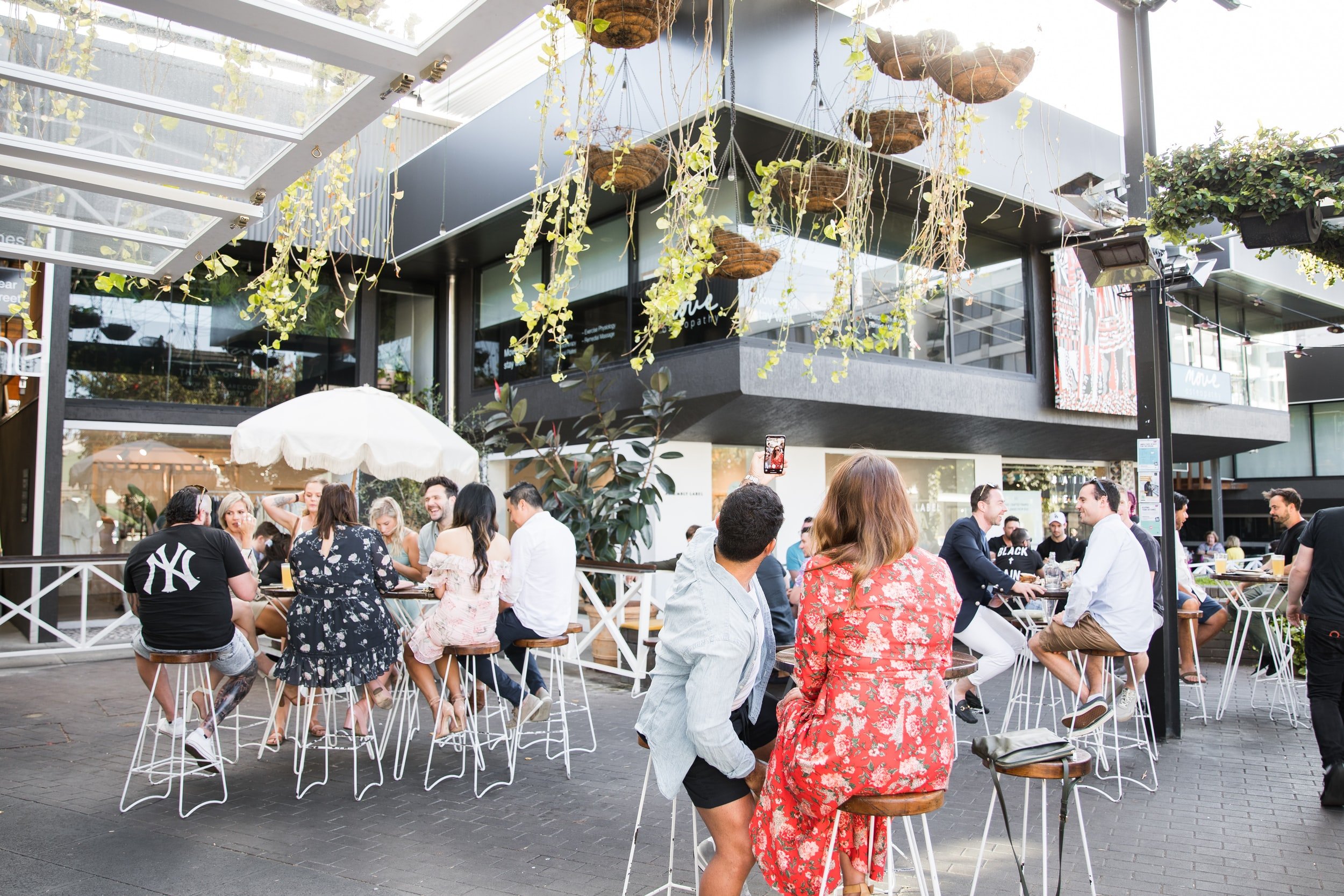5 RADest bar and restaurant design trends for 2022
As a hospitality architect, it’s hard not to mention COVID-19 when discussing how bar and restaurant designs have changed. But without the restrictions placed upon hospitality venues throughout the western world, would we ever have adapted our standards of comfort and creativity?
While many bars, restaurants and cafés have modified their front-of-house to adhere to the new hospitality regulations with floor stickers, QR code window laminates and plexi-glass at the bar, these are simply temporary and quite frankly, unsightly adjustments that offer nothing to the overall aesthetics and vibe of the venue.
So what will F&B venues look like in the future? We know they take into consideration social distancing, barriers and digital barcodes - but how will it translate from an architectural standpoint?
Flexible seating
Indoor dining furniture will need to be easily customisable to various situations. We’ll likely say ‘goodbye’ to fixed seating and long group tables, and ‘hello’ to tables of 2 that can be transformed into tables of 4 or 6.
To enforce social distancing without the awkward signage, cosy cocktail lounges may be equipped with comfortable seats with large armrests that are both ergonomic and maintain distance between seated patrons.
And with regards to the ever-popular bar, will we continue to see customers sat along the bench on bar stools as they watch the game of the day?
If venues value their buck (which believe me, they do), we will start to see an all-new approach to bar design in the coming months and years, including the growing-in-popularity multi-sided bar. The width of the beloved bar will widen, and various ‘zones’ will be created, allowing mates to gather privately with continued visibility of the entire bar. It’s the same communal feel with the added notion of safety, post-COVID.
Outdoor dining
A COVID failsafe! Where possible, venues are adjusting their trading style and even their offerings to accommodate patrons wishing to sit outdoors. Creating sufficient seating in your patio or beer garden not only adds covers where perhaps there were fewer before, but gains seats back where indoor restrictions meant tables and chairs were removed for social distancing purposes.
We will also start seeing more bi-fold doors to extend the indoor dining area onto outdoor patio areas, creating an instant alfresco experience. Introducing bi-fold doors will also allow for increased air flow, better flow of service, and further opportunities for design innovation and offering expansion.
Entrances and exits
Restaurant owners have been rightfully concerned about minimising customer interactions to allow for better traffic flows in the time of COVID. But restrictions aside, this is also simply good for a venue’s bottom line.
Pick-up windows and separate entries and exits will be high on owners’ priority lists from now on. As online ordering is fast becoming the main way of obtaining a restaurant meal in 2022, venues will start looking at ways to introduce a dedicated window or pick-up point if they haven’t already.
Venues will create or cultivate ambiance by setting a pick-up point at an outside section of the venue, opposite the bar, and near to the entrance. This way, disruptions caused by the door opening (or revolving) repeatedly as delivery drivers and online customers come and go to collect their orders will be minimal, and sitting patrons will have a better chance at enjoying a calm dining or drinking experience.
Technology
The digital landscape is changing the way we approach the dining experience, and restaurants are becoming innovative in the way they are adjusting their ordering process to benefit patrons going forward. But while digital ordering has so far been a rather bland experience, the way you introduce it to your venue needn’t be.
Digital menus and ordering is a great way to service customers with less fuss, and it’s here to stay. Restaurants are investing in accessible and customisable digital menus complemented by clear order/QR signage around the venue; this helps guarantee venues a return on investment with enhanced staff efficiency, and an ordering experience that encourages the customer to return.
Colour
Colour is returning to bar and restaurant design in a big way! Perhaps this is due to our subconscious need for life and vibrancy following recent lockdowns? Or perhaps business owners are simply more aware of how powerful their branding is or could be.
Hospitality businesses are realising that if the colour scheme doesn’t ‘speak to the core customer’, the profit margin will likely take a hit. Let’s face it. What trucker or shift worker is going to feel totally comfortable stopping in for a mid-morning pint in a bar that is decked out like a coffee shop?
Restaurants and bars are becoming much more vigilant in how they market their venue since the COVID shut downs and restrictions, because now more than ever, business owners need patrons to keep their livelihoods afloat. So what I’m seeing more of in 2022 are businesses focussing on getting their branding right, and no longer winging it because “sales are good”.
So what do you think of these 5 innovations being introduced to bar and restaurant designs? Are you in favour of digital menus? Do you plan to introduce flexible seating in your venue?
RAD Design uses strategy to work out the creative, rather than creative to work out the strategy. If you’re looking to modernise your venue or are in the early stages of planning for your new hospitality business, visit our website to schedule a call, and we’ll talk you through the process.
RAD DESIGN offers the expertise of an experienced builder who understands how design and construction collide to create well thought-out spaces that lead to ultimate customer satisfaction. Working with a talented designer with a construction background will save you the headache of putting out unexpected ‘spot fires’ that may arise onsite, and save you money in the process.

